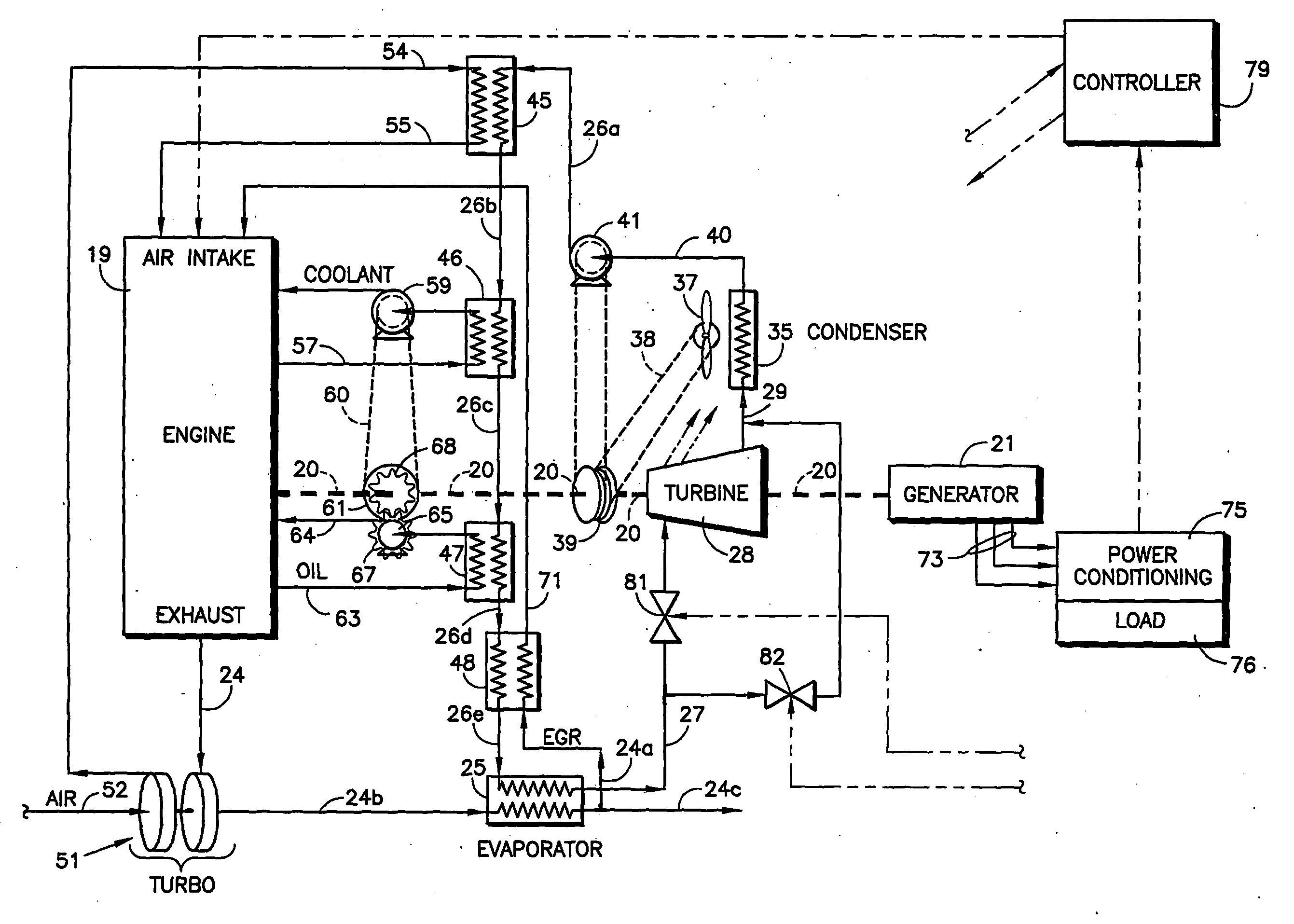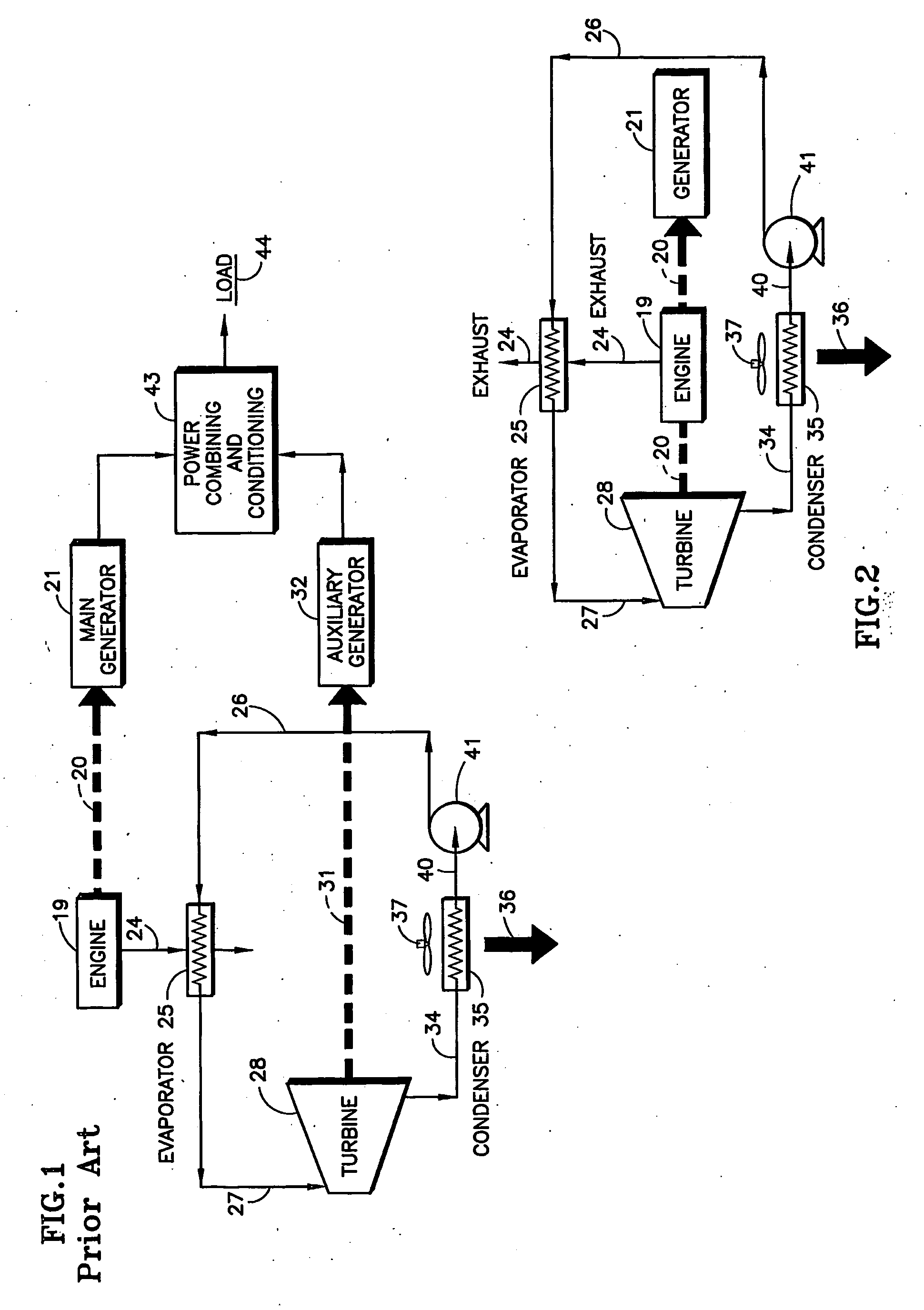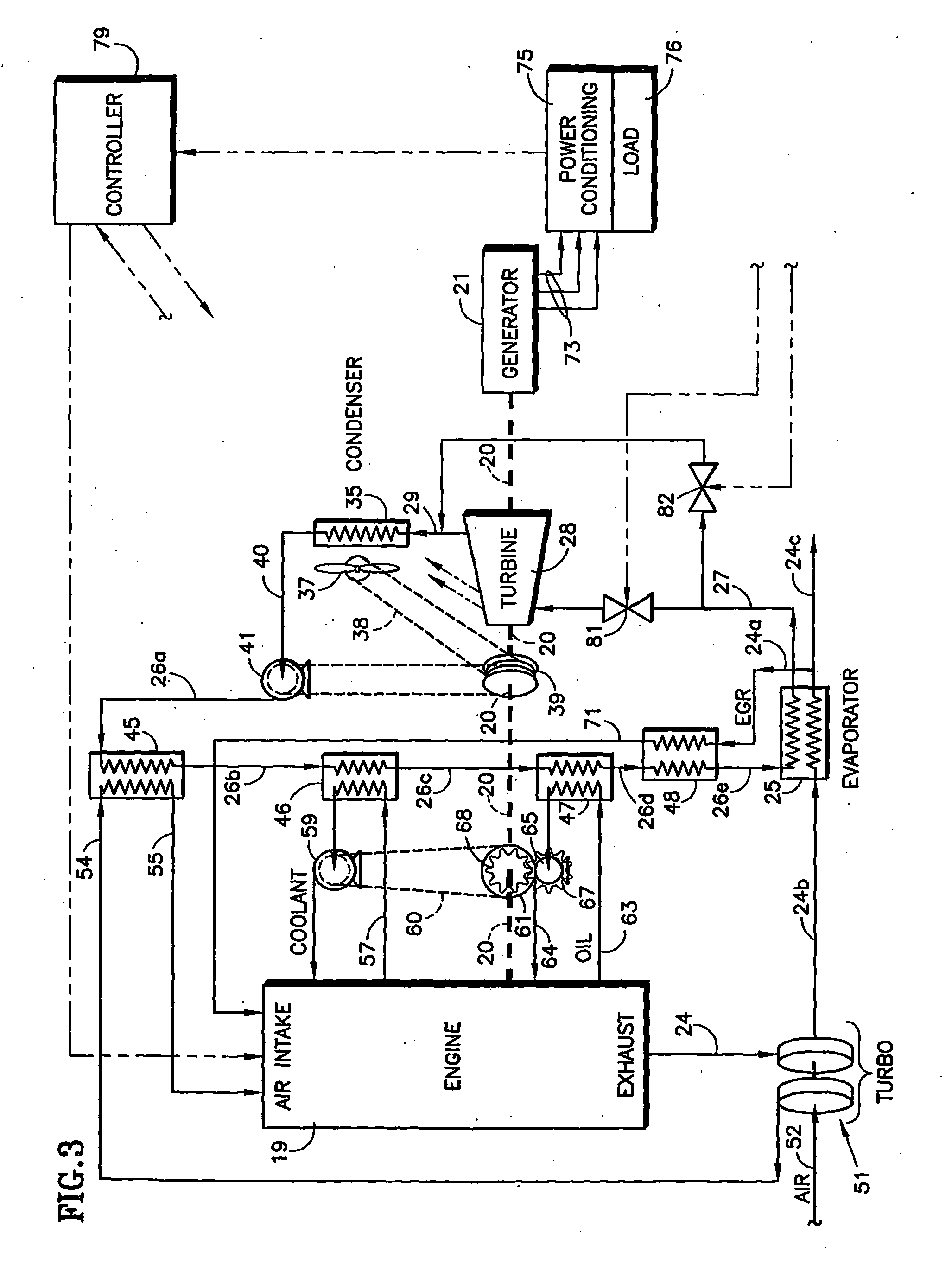Organic Rankine Cycle Mechanically and Thermally Coupled to an Engine Driving a Common Load
a rankine cycle and engine technology, applied in mechanical equipment, machines/engines, steam engine plants, etc., can solve the problems of inability to achieve maximum efficiency with such a system, inability to achieve power combining circuitry, and inability to meet the requirements of the system
- Summary
- Abstract
- Description
- Claims
- Application Information
AI Technical Summary
Benefits of technology
Problems solved by technology
Method used
Image
Examples
Embodiment Construction
[0031]The simplest embodiment of the present invention, illustrated in FIG. 2, eliminates the need for an auxiliary generator 32 (FIG. 1) and the power combining processing associated therewith. This is achieved by causing the turbine (28) to be journaled on the same shaft 20 along with the engine 19 and a single generator 21. With the turbine rotor directly coupled to the engine shaft, the engine is started first, and actually drives the turbine as a load until the generated heat in the engine becomes sufficient to cause the ORC turbine 28 to contribute torque to the shaft 20.
[0032]A simplified illustrative representation of a reciprocating engine with an organic Rankine cycle subsystem utilizing substantially all of the waste engine heat is shown in FIG. 3. Therein, instead of utilizing only exhaust heat in an evaporator, there are a plurality of preheaters 45-48, each consisting of a heat exchanger with the ORC fluid being warmed to increasing temperatures by engine waste heat.
[0...
PUM
 Login to View More
Login to View More Abstract
Description
Claims
Application Information
 Login to View More
Login to View More - R&D
- Intellectual Property
- Life Sciences
- Materials
- Tech Scout
- Unparalleled Data Quality
- Higher Quality Content
- 60% Fewer Hallucinations
Browse by: Latest US Patents, China's latest patents, Technical Efficacy Thesaurus, Application Domain, Technology Topic, Popular Technical Reports.
© 2025 PatSnap. All rights reserved.Legal|Privacy policy|Modern Slavery Act Transparency Statement|Sitemap|About US| Contact US: help@patsnap.com



